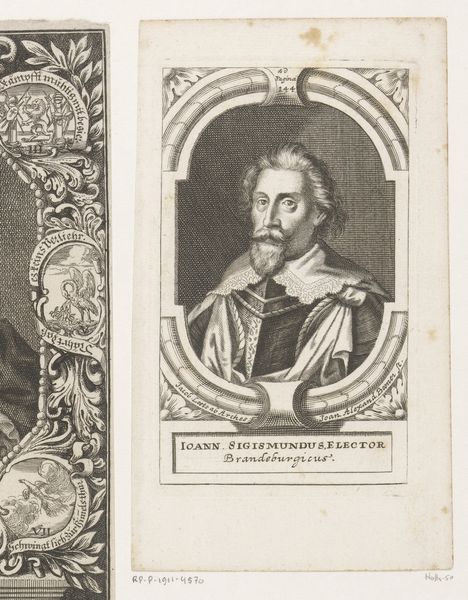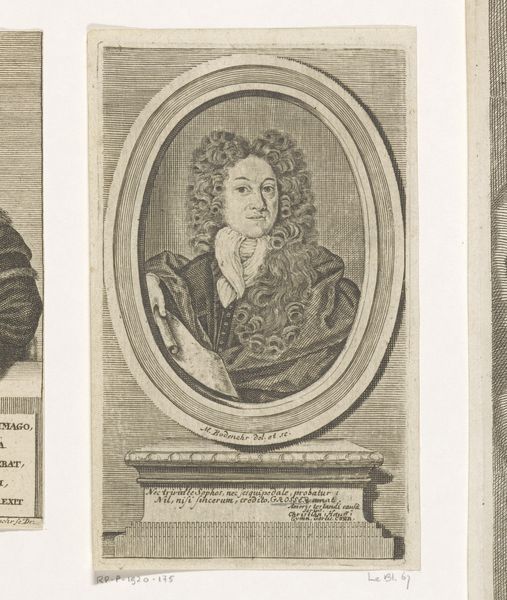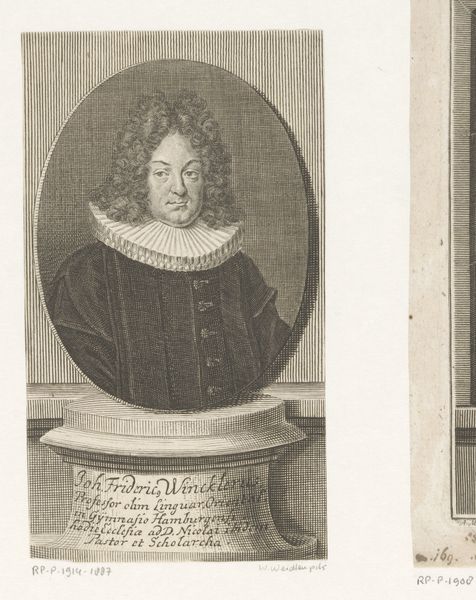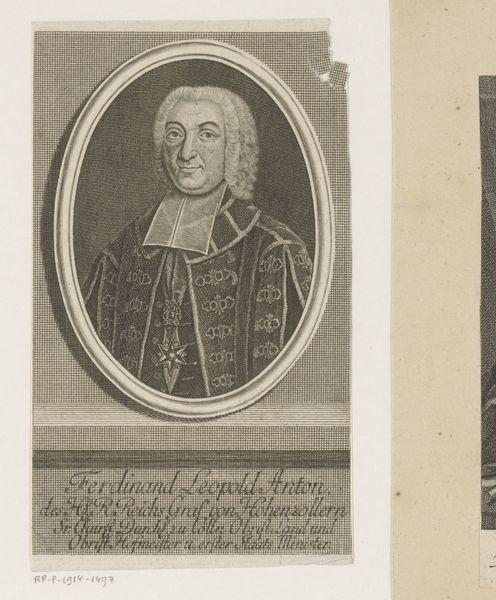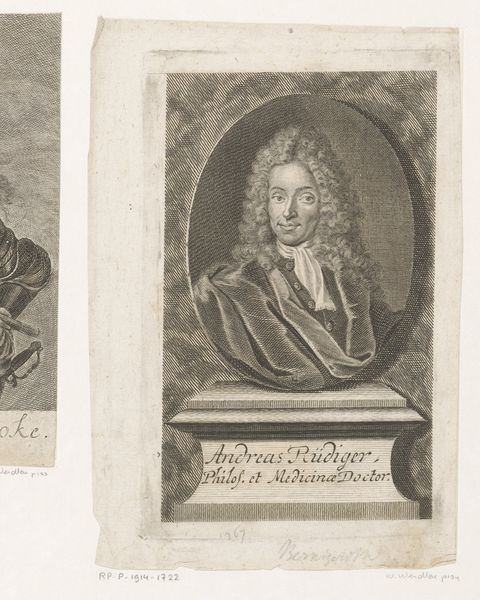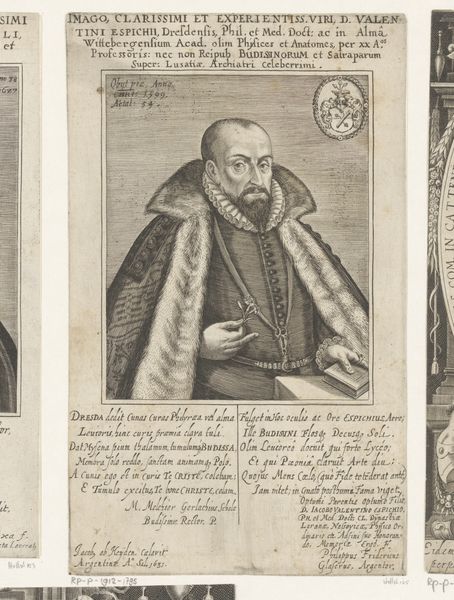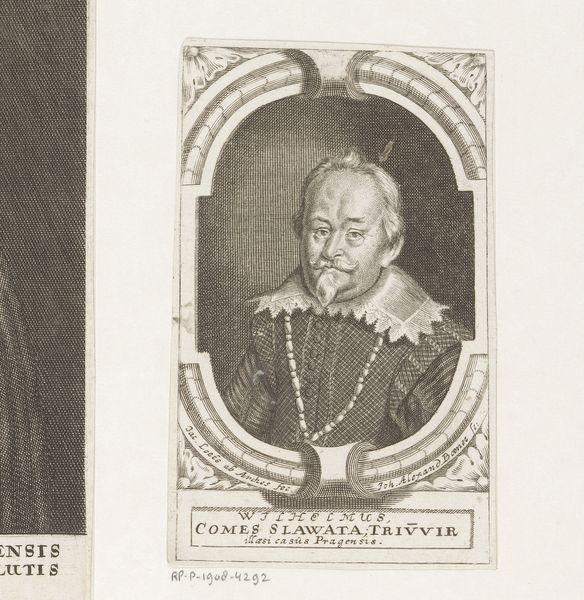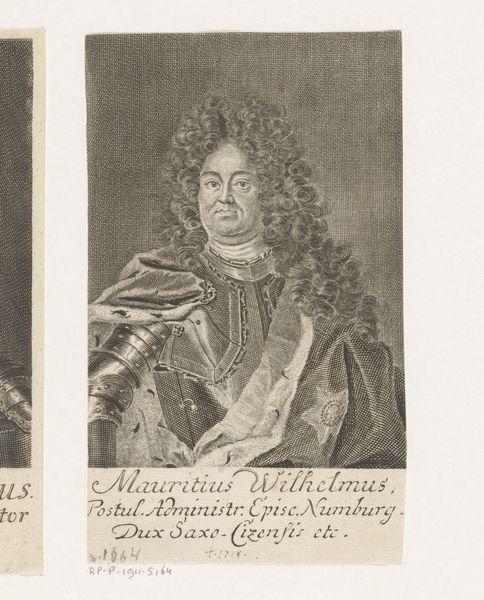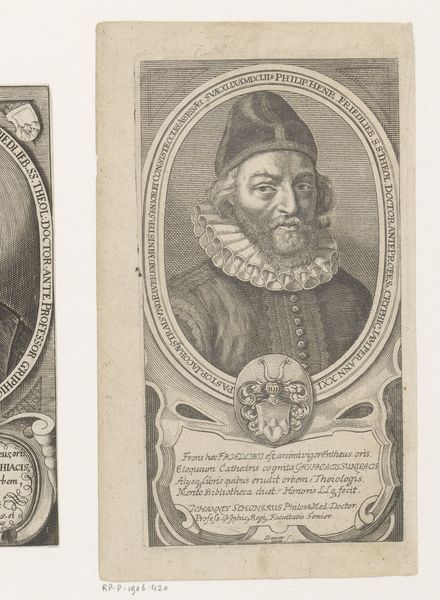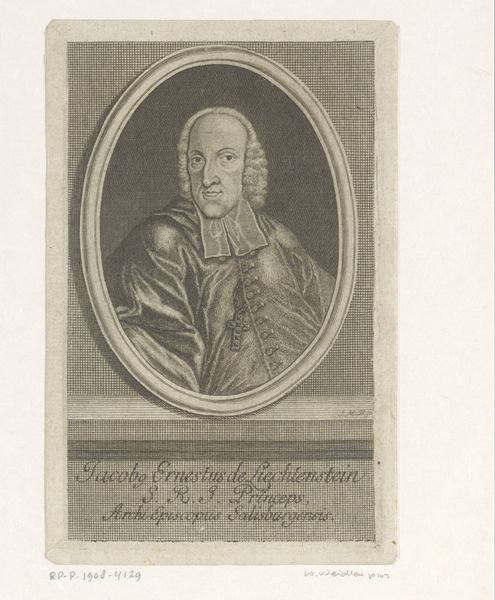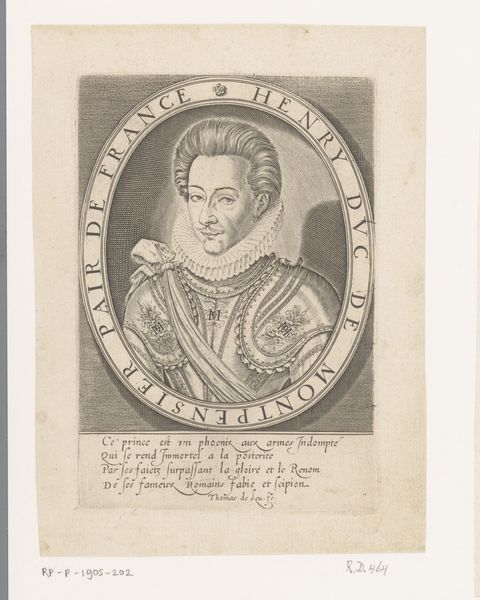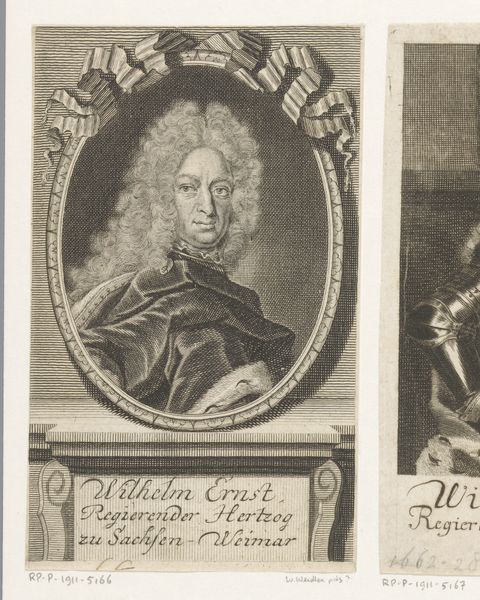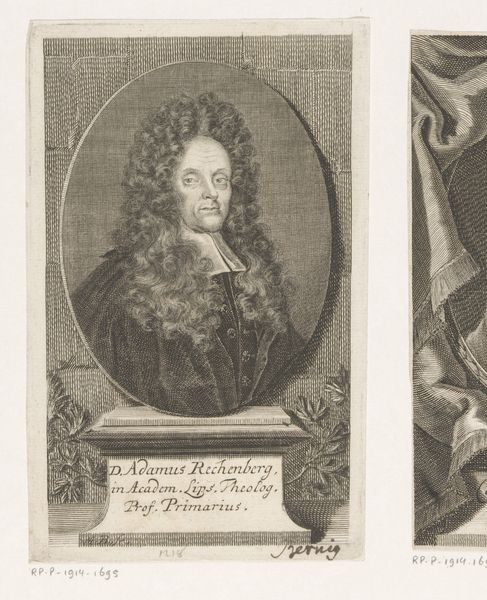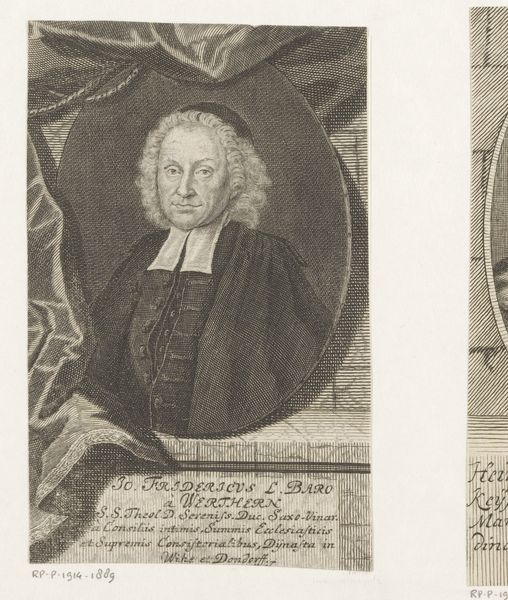
engraving
#
portrait
#
baroque
#
history-painting
#
engraving
Dimensions: height 123 mm, width 75 mm
Copyright: Rijks Museum: Open Domain
Curator: Welcome. We are standing before Johann Alexander Böner's "Portret van Maximiliaan I van Beieren," an engraving completed in 1677 and currently housed at the Rijksmuseum. Editor: My immediate impression is the subject's severe gaze. It's a composition dominated by line and the contrasts between the stark white of the paper and the meticulously etched armour. The effect is one of formidable power, though perhaps slightly two-dimensional to modern eyes. Curator: Indeed. Böner, in creating this portrait of Maximilian I, Duke of Bavaria, relies heavily on the conventions of Baroque portraiture, but he is constrained and enabled by the demands of printmaking as a reproductive medium. Consider the process of engraving—the labour of meticulously incising lines into the copper plate to create areas of tone and texture. It's a process of translating colour and three-dimensionality into graphic information intended for mass dissemination. The level of craft is key. Editor: Yes, I'm noticing how the repetitive use of hatching suggests not just the gleam of the armour, but a certain psychological rigidity, or perhaps, it alludes to societal expectation of this man. Curator: Böner was deeply embedded in the artistic circles of his time. As a highly trained professional he worked for commission from elite circles as well as commercial publishing enterprises. His biography highlights the economic systems that fostered his particular set of techniques. Editor: Considering the Baroque period's preoccupation with grandeur, how does the monochromatic palette—enforced by the engraving medium—affect the overall impact? Curator: Interesting point. One might argue that the absence of colour focuses attention on line and form, emphasizing the strength and structure. The way Böner renders light and shadow adds depth despite being on one level, a relatively flat image. More subtly, consider the symbolic importance of Maximilian's armor: How does the production and consumption of military objects work here as part of the process of power? How much did armourers make, how was this labour organized, what can this tell us about the material conditions for elite identity. Editor: The work seems to strive for a grand representation. Although I may find its style more austere than seductive, it remains a compelling study in power and persona as crafted through a highly disciplined visual language. Curator: I agree, the focus on dissemination emphasizes art's contribution to building reputation within highly developed networks of production and consumption, whose social impact and material features we have only touched on here. Thank you for joining me on this exploration of image production and social reality in this work.
Comments
No comments
Be the first to comment and join the conversation on the ultimate creative platform.
